Themed collection Miniaturised Sensors & Diagnostics

Lessons from COVID-19 for improving diagnostic access in future pandemics
Throughout the COVID-19 pandemic, we have witnessed the critical and expanding roles of testing.
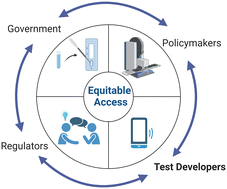
Lab Chip, 2023,23, 1376-1388
https://doi.org/10.1039/D2LC00662F
Recent advances in gold electrode fabrication for low-resource setting biosensing
Conventional gold electrode fabrication is too costly and laborious for implementation in low-resource settings (LRS). We review affordable, simple alternative fabrication methods, highlighting gold leaf electrodes, for LRS applications.
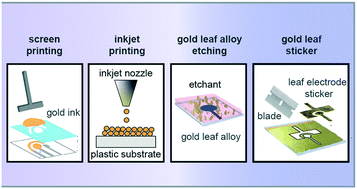
Lab Chip, 2023,23, 1410-1419
https://doi.org/10.1039/D2LC00552B
Engineering a sustainable future for point-of-care diagnostics and single-use microfluidic devices
Single-use, disposable, point-of-care diagnostic devices carry great promise for global health, but present some challenges in terms of environmental sustainability. This perspective covers solutions to embed sustainability at the R&D and product development stages.

Lab Chip, 2022,22, 3122-3137
https://doi.org/10.1039/D2LC00380E
Promise and perils of paper-based point-of-care nucleic acid detection for endemic and pandemic pathogens
Review work on the challenges of paper-based NAATs covering sample-to-answer procedures along with the three main types of clinical samples as well as broader operational, scale up, and regulatory aspects of device development and implementation.
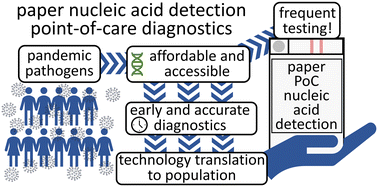
Lab Chip, 2023,23, 888-912
https://doi.org/10.1039/D2LC00554A
Label-free microfluidic cell sorting and detection for rapid blood analysis
This review focuses on recent microfluidic technologies for label-free blood cell separation, detection and coupling with machine learning approaches.
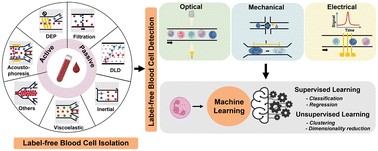
Lab Chip, 2023,23, 1226-1257
https://doi.org/10.1039/D2LC00904H
Microfluidic solutions for biofluids handling in on-skin wearable systems
The paper provides a comprehensive review on micro elastofluidic solutions for on-skin wearable devices.

Lab Chip, 2023,23, 913-937
https://doi.org/10.1039/D2LC00993E
A critical review of microfluidic systems for CRISPR assays
We review recent advances in CRISPR-based nucleic acid detection using microfluidic devices and discuss the capabilities, limitations, and potential of this emerging technology.

Lab Chip, 2023,23, 938-963
https://doi.org/10.1039/D2LC00852A
Non-invasive biomedical sensors for early detection and monitoring of bacterial biofilm growth at the point of care
This comprehensive review covers current methods used for biofilm detection in clinical and laboratory settings and noninvasive portable technologies for direct and indirect detection of biofilm growth and monitoring at the point of care.

Lab Chip, 2022,22, 4758-4773
https://doi.org/10.1039/D2LC00776B
Flowmetering for microfluidics
This review critically analyzes the variety of methods to measure microfluidic flow rates as well as the development of metrological infrastructures for this purpose.

Lab Chip, 2022,22, 3603-3617
https://doi.org/10.1039/D2LC00188H
Simplifying the complex: accessible microfluidic solutions for contemporary processes within in vitro diagnostics
This review details how microfluidic technologies are disrupting the status quo, and facilitating the development of simple, affordable, and accessible integrated IVDs.

Lab Chip, 2022,22, 3340-3360
https://doi.org/10.1039/D2LC00609J
Advancing microfluidic diagnostic chips into clinical use: a review of current challenges and opportunities
Microfluidic diagnostic (μDX) technologies miniaturize sensors and actuators to the length-scales that are relevant to biology: the micrometer scale to interact with cells and the nanometer scale to interrogate biology's molecular machinery.

Lab Chip, 2022,22, 3110-3121
https://doi.org/10.1039/D2LC00024E
Lateral flow assays for hormone detection
Lateral flow assays (LFAs) have gained momentum for hormone biosensing, offering significant advantages over conventional techniques. This review demonstrates recent advances driving LFAs to the forefront of modern point-of-care hormone biosensing.
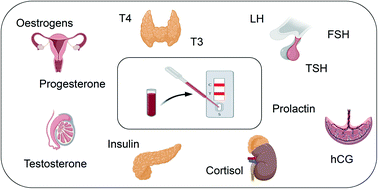
Lab Chip, 2022,22, 2451-2475
https://doi.org/10.1039/D1LC00960E
Micro-/nano-fluidic devices and in vivo fluorescence imaging based on quantum dots for cytologic diagnosis
A review for quantum dots (QDs) as fluorescent nanoprobes for biosensing of biomolecules and cells based on microfluidic chips and for in vivo imaging of transplanted cells via an in vivo imaging system.
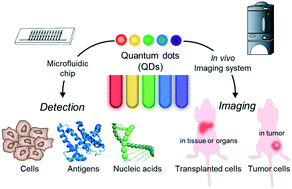
Lab Chip, 2022,22, 2223-2236
https://doi.org/10.1039/D2LC00113F
Lab-on-a-chip technologies for minimally invasive molecular sensing of diabetic retinopathy
Diabetic retinopathy (DR) is the most common diabetic eye disease and the worldwide leading cause of vision loss in working-age adults.

Lab Chip, 2022,22, 1876-1889
https://doi.org/10.1039/D1LC01138C
Point-of-care diagnostics: recent developments in a pandemic age
This article reviews the rapid and unprecedented development, scaleup and deployment of POC devices in response to the COVID-19 pandemic and its implications for the future of diagnostics and digital health.

Lab Chip, 2021,21, 4517-4548
https://doi.org/10.1039/D1LC00627D
A microfluidic finger-actuated blood lysate preparation device enabled by rapid acoustofluidic mixing
An integrated finger-actuated device utilising an acoustofluidic mixer, allows for the preparation of a filtered blood lysate from in under 3 minutes and without any pipetting.

Lab Chip, 2023,23, 62-71
https://doi.org/10.1039/D2LC00968D
Autonomous wearable sweat rate monitoring based on digitized microbubble detection
A digitized microbubble detection mechanism delivered by a hybrid microfluidic/electronic system is devised for autonomous wearable high signal-to-noise ratio sweat rate monitoring.
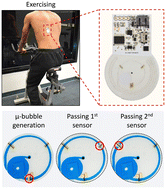
Lab Chip, 2022,22, 4267-4275
https://doi.org/10.1039/D2LC00670G
Selection and characterisation of bioreceptors to develop nanoparticle-based lateral-flow immunoassays in the context of the SARS-CoV-2 outbreak
Selection of bioreceptors is a resource- and time-consuming process that holds back the highly demanded implementation of rapid tests in emergency situations.

Lab Chip, 2022,22, 2938-2943
https://doi.org/10.1039/D2LC00486K
Fabrication of ITO microelectrodes and electrode arrays using a low-cost CO2 laser plotter
Two complementary low-cost methods of ITO electrode fabrication allowing small structures from 25 μm in width and removal of background ITO.

Lab Chip, 2023,23, 3802-3810
https://doi.org/10.1039/D3LC00266G
A label-free electrochemical DNA biosensor used a printed circuit board gold electrode (PCBGE) to detect SARS-CoV-2 without amplification
The graphical representation depicts a novel method of detecting the SARS-CoV-2 N gene without amplification using a label-free electrochemical DNA biosensor-based printed circuit board gold electrode (PCBGE).

Lab Chip, 2023,23, 1622-1636
https://doi.org/10.1039/D2LC01159J
Magnetically localized and wash-free fluorescence immunoassay (MLFIA): proof of concept and clinical applications
The magnetically localized and wash-free fluorescence immunoassay (MLFIA) is a no-wash assay for directly measuring biomolecule (antigen and antibody) concentration, without mixing nor washing steps, from a body fluid (serum and plasma).
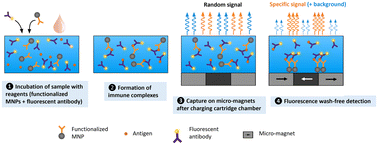
Lab Chip, 2023,23, 645-658
https://doi.org/10.1039/D2LC00926A
A photonic biosensor-integrated tissue chip platform for real-time sensing of lung epithelial inflammatory markers
Integration of photonic sensors with tissue chips (TCs; also known as microphysiological systems or organ chips) enables real time monitoring of analytes produced by the TC or passed through a model tissue barrier.

Lab Chip, 2023,23, 239-250
https://doi.org/10.1039/D2LC00864E
A 3D-printed microfluidic gradient generator with integrated photonic silicon sensors for rapid antimicrobial susceptibility testing
A 3D-printed gradient generator for automated and expeditious on-chip antimicrobial susceptibility testing in a label-free manner is presented, paving the way towards clinical point-of-care applications.

Lab Chip, 2022,22, 4950-4961
https://doi.org/10.1039/D2LC00640E
Microfluidic quantum sensing platform for lab-on-a-chip applications
A microfluidic platform for solid-state quantum sensing, enabling the measurement of various physical quantities for lab-on-a-chip applications.
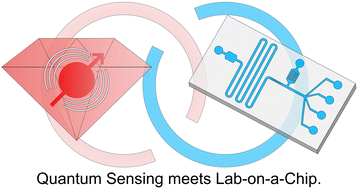
Lab Chip, 2022,22, 4831-4840
https://doi.org/10.1039/D2LC00874B
Computer vision enabled funnel adapted sensing tube (FAST) for power-free and pipette-free nucleic acid detection
A simple, portable, and low-cost microfluidic system-funnel adapted sensing tube (FAST) is developed as an integrated, power-free, and pipette-free biosensor for viral nucleic acids.
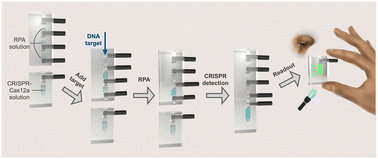
Lab Chip, 2022,22, 4849-4859
https://doi.org/10.1039/D2LC00586G
A microfluidic fully paper-based analytical device integrated with loop-mediated isothermal amplification and nano-biosensors for rapid, sensitive, and specific quantitative detection of infectious diseases
A microfluidic fully paper-based analytical device integrated with loop-mediated isothermal amplification (LAMP) and graphene oxide nanosensors was developed for the first time for rapid, low-cost, and quantitative detection of infectious diseases.

Lab Chip, 2022,22, 4693-4704
https://doi.org/10.1039/D2LC00834C
Instrument-free single-step direct estimation of the plasma glucose level from one drop of blood using smartphone-interfaced analytics on a paper strip
We demonstrated an instrument-free miniaturized adaptation of the laboratory gold standard methodology for direct estimation of plasma glucose from a drop of blood using a low-cost single-user-step paper-strip sensor interfaced with a smartphone.
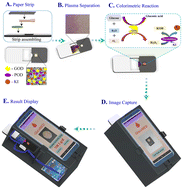
Lab Chip, 2022,22, 4666-4679
https://doi.org/10.1039/D2LC00824F
An ultra-thin flexible wearable sensor with multi-response capability prepared from ZIF-67 and conductive metal–organic framework composites for health signal monitoring
The first synthesized cZIF-67@Cu-CAT nanoparticles were used as sensitive materials to prepare a dual response mode sensor.

Lab Chip, 2022,22, 4593-4602
https://doi.org/10.1039/D2LC00921H
Bioprinting-based automated deposition of single cancer cell spheroids into oxygen sensor microelectrode wells
With an advanced bioprinter, we print cancer cell spheroids directly into chip-based oxygen microsensors to determine single spheroid metabolism and drug responses.

Lab Chip, 2022,22, 4369-4381
https://doi.org/10.1039/D2LC00705C
Design and fabrication of a novel on-chip pressure sensor for microchannels
This paper presents a novel pressure sensor to be used with microfluidic channels. The sensor is based on optical particle tracking, which turns a regular fluorescence microscope into a pressure measurement device.
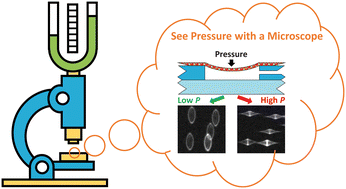
Lab Chip, 2022,22, 4306-4316
https://doi.org/10.1039/D2LC00648K
High sensitivity label-free detection of HER2 using an Al–GaN/GaN high electron mobility transistor-based biosensor
This work reports rapid, label-free and specific detection of the HER2 antigen using a gallium nitride (GaN) high electron mobility transistor (HEMT).

Lab Chip, 2022,22, 4129-4140
https://doi.org/10.1039/D2LC00349J
Capillary pressure-based measurement of dynamic interfacial tension in a spontaneous microfluidic sensor
The EDGE tensiometer allows access to nearly the full range of dynamic interfacial tension at relevant time scales for both droplet and bubble interfaces.

Lab Chip, 2022,22, 3860-3868
https://doi.org/10.1039/D2LC00545J
Development of an IoT-integrated multiplexed digital PCR system for quantitative detection of infectious diseases
IoT-integrated multiplexed digital PCR system for detection of infectious diseases.

Lab Chip, 2022,22, 3933-3941
https://doi.org/10.1039/D2LC00726F
Femtosecond laser direct writing of a 3D microcantilever on the tip of an optical fiber sensor for on-chip optofluidic sensing
A microcantilever is fabricated by femtosecond laser direct writing for on-chip optofluidic sensing.

Lab Chip, 2022,22, 3734-3743
https://doi.org/10.1039/D2LC00625A
Miniaturized sensor for electroanalytical and electrochemiluminescent detection of pathogens enabled through laser-induced graphene electrodes embedded in microfluidic channels
Miniaturized electrochemical and electrochemiluminescent biosensor using laser-induced graphene electrodes for highly sensitive and selective detection of C. parvum DNA.
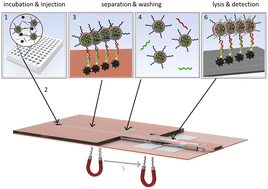
Lab Chip, 2022,22, 3721-3733
https://doi.org/10.1039/D2LC00593J
CandyCollect: at-home saliva sampling for capture of respiratory pathogens
This paper presents a new sample collection platform for a common bacterial infection, group A streptococcal (GAS) pharyngitis, also known as strep throat, caused by Streptococcus pyogenes.

Lab Chip, 2022,22, 3555-3564
https://doi.org/10.1039/D1LC01132D
Ultra-rapid real-time microfluidic RT-PCR instrument for nucleic acid analysis
The described microfluidic instrument performs real-time PCR (40 cycles) with comparable sensitivity to commercial instrumentation in under 10 minutes.
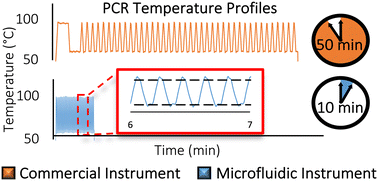
Lab Chip, 2022,22, 3424-3435
https://doi.org/10.1039/D2LC00495J
Quantitative brain-derived neurotrophic factor lateral flow assay for point-of-care detection of glaucoma
We develop a quantitative lateral flow assay (LFA) device that is able to measure the tear level of brain derived neurotrophic factor (BDNF). The device shows great potential to serve as an ideal platform for early detection of glaucoma.

Lab Chip, 2022,22, 3521-3532
https://doi.org/10.1039/D2LC00431C
An integrated magneto-opto-fluidic biosensor for rapid on-chip assay of respiratory viruses of livestock
This work demonstrated an on-chip virus analysis technology that can characterize multiple viruses in clinical samples with automated sample processing and detection.

Lab Chip, 2022,22, 3236-3244
https://doi.org/10.1039/D2LC00406B
Rapid nucleic acid extraction from skin biopsies using a point-of-care device
BLENDER is a point-of-care device for rapid sample processing of large, robust tissue such as skin punch biopsies.

Lab Chip, 2022,22, 3229-3235
https://doi.org/10.1039/D2LC00457G
Automated sample-to-answer centrifugal microfluidic system for rapid molecular diagnostics of SARS-CoV-2
A rapid, fully automated, sensitive and specific SARS-CoV-2 detection method using RT-LAMP is performed on a centrifugal platform with active pneumatic pumping, a disposable, all-polymer-based microfluidic cartridge and lyophilized reagents.

Lab Chip, 2022,22, 3157-3171
https://doi.org/10.1039/D2LC00242F
Highly accurate multiprotein detection on a digital ELISA platform
The emerging single-molecule detection platform digital enzyme-linked immunosorbent assay (ELISA) can detect numerous proteins simultaneously at serum concentrations as low as picograms per milliliter.

Lab Chip, 2022,22, 3015-3024
https://doi.org/10.1039/D2LC00388K
All-printed point-of-care immunosensing biochip for one drop blood diagnostics
An all-printed nanophotonic biochip is demonstrated for fast and easy-to-use quantitative detection of cardiac biomarkers. One drop of blood allows specific detection in 10 min. This is a potential platform for portable clinical diagnostics and home medical monitoring.
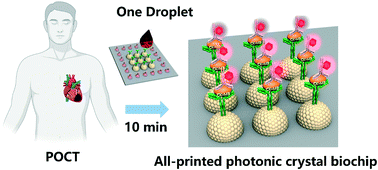
Lab Chip, 2022,22, 3008-3014
https://doi.org/10.1039/D2LC00385F
Parallel multistep digital analysis SlipChip demonstrated with the quantification of nucleic acid by digital LAMP-CRISPR
A parallel multistep digital analysis SlipChip for the parallel manipulation of a large number of droplets for digital biological analysis.
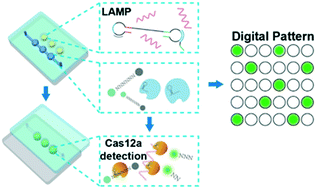
Lab Chip, 2022,22, 2954-2961
https://doi.org/10.1039/D2LC00284A
Non-competitive fluorescence polarization immunosensing for CD9 detection using a peptide as a tracer
A microfluidic-based non-competitive fluorescence polarization immunoassay using a peptide as a tracer enables simple and rapid CD9 detection.
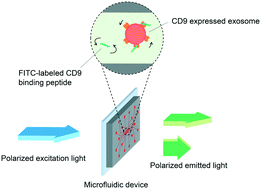
Lab Chip, 2022,22, 2971-2977
https://doi.org/10.1039/D2LC00224H
Proof of concept of a two-stage GMR sensor-based lab-on-a-chip for early diagnostic tests
Proof of concept of the potential of an innovative double detection biochip based on GMR sensors as a diagnostic test.

Lab Chip, 2022,22, 2753-2765
https://doi.org/10.1039/D2LC00353H
Centrifugal disc liquid reciprocation flow considerations for antibody binding to COVID antigen array during microfluidic integration
Investigating fluid flow behavior during different acceleration and deceleration ramp rates for immunoassays.
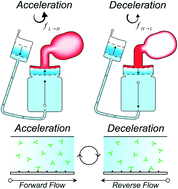
Lab Chip, 2022,22, 2695-2706
https://doi.org/10.1039/D2LC00213B
High-throughput digital pathology via a handheld, multiplexed, and AI-powered ptychographic whole slide scanner
The handheld, do-it-yourself ptychographic whole slide scanner for high-throughput digital pathology applications.
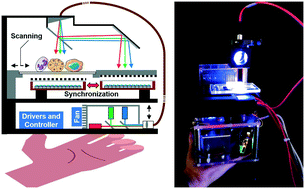
Lab Chip, 2022,22, 2657-2670
https://doi.org/10.1039/D2LC00084A
Micro-PCR chip-based multifunctional ultrafast SARS-CoV-2 detection platform
By using different customized microfluidic chips, a multifunctional rapid PCR platform allows fast screening of suspected cases within 15 min, followed by rapidly providing precise quantification of the SARS-CoV-2 virus.
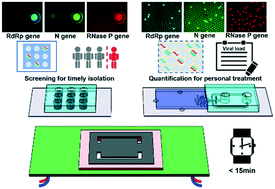
Lab Chip, 2022,22, 2671-2681
https://doi.org/10.1039/D2LC00101B
A plantar wearable pressure sensor based on hybrid lead zirconate-titanate/microfibrillated cellulose piezoelectric composite films for human health monitoring
A plantar pressure testing platform measured stress ranging from 35–47.5 kPa at each acupoint, determining the force at each point, and identifying abnormalities. It highlights the advantages of miniaturization, low cost and real-time detection.

Lab Chip, 2022,22, 2376-2391
https://doi.org/10.1039/D2LC00051B
In-line measurement of liquid–liquid phase separation boundaries using a turbidity-sensor-integrated continuous-flow microfluidic device
A novel turbidity-sensor-integrated microfluidic device is developed to quickly measure the liquid–liquid phase separation boundaries.

Lab Chip, 2022,22, 2299-2306
https://doi.org/10.1039/D1LC01112J
Reagent free detection of SARS-CoV-2 using an antibody-based microwave sensor in a microfluidic platform
Schematic of the microfluidic microwave detection of the SARS-CoV-2 virus. The detection relies on the frequency shift caused by the binding between the antibody coated on the microwave sensor and the SARS-CoV-2 antigen or virus.
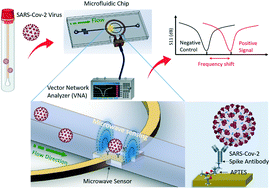
Lab Chip, 2022,22, 2307-2314
https://doi.org/10.1039/D2LC00145D
From saliva to SNP: non-invasive, point-of-care genotyping for precision medicine applications using recombinase polymerase amplification and giant magnetoresistive nanosensors
We present a portable, highly integrated platform that employs isothermal recombinase polymerase amplification and giant magnetoresistive nanosensors to perform multiplex SNP genotyping at the point-of-care.
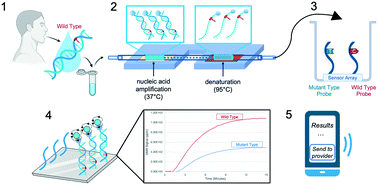
Lab Chip, 2022,22, 2131-2144
https://doi.org/10.1039/D2LC00233G
Cellular point-of-care diagnostics using an inexpensive layer-stack microfluidic device
Passively pumped layer stack microfluidics allow for simple, inexpensive cyclic imaging with reduced reagent usage.
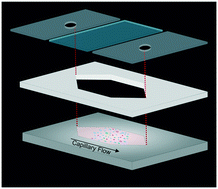
Lab Chip, 2022,22, 2145-2154
https://doi.org/10.1039/D2LC00162D
A large-volume sputum dry storage and transportation device for molecular and culture-based diagnosis of tuberculosis
We present SPECTRA-tube (specimen transportation tube), a device that enables the dry stabilization and transportation of large volumes (>1 mL) of liquid specimens. We demonstrate its application in molecular and culture testing of tuberculosis.
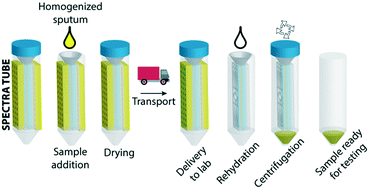
Lab Chip, 2022,22, 1736-1747
https://doi.org/10.1039/D1LC00900A
Portable sample processing for molecular assays: application to Zika virus diagnostics
A digital microfluidic system was developed for portable Zika virus diagnosis, featuring integrated, automated sample extraction and amplification.
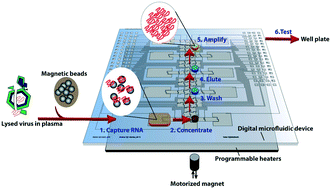
Lab Chip, 2022,22, 1748-1763
https://doi.org/10.1039/D1LC01068A
A self-contained and integrated microfluidic nano-detection system for the biosensing and analysis of molecular interactions
A self-contained and integrated microfluidic nano-detection system was developed, demonstrating excellent performance for biosensing and analysis of molecular interactions.

Lab Chip, 2022,22, 1702-1713
https://doi.org/10.1039/D1LC01056E
A star shaped acoustofluidic mixer enhances rapid malaria diagnostics via cell lysis and whole blood homogenisation in 2 seconds
Shear stresses generated by a silicon resonator embedded inside a microfluidic channel can rapidly and effectively lyse cells and homogenise whole blood. This significantly improves sensitivity of ATR-FTIR spectroscopy based diagnostic tests.
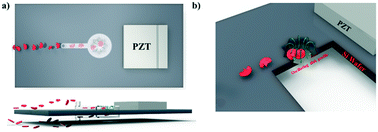
Lab Chip, 2022,22, 1829-1840
https://doi.org/10.1039/D2LC00195K
An epidermal wearable microfluidic patch for simultaneous sampling, storage, and analysis of biofluids with counterion monitoring
An epidermal, wearable bio-fluidic patch is demonstrated that facilitates simultaneous on-demand extraction, sampling, and storage of sweat and interstitial fluid (ISF) together with monitoring of their corresponding counterions.
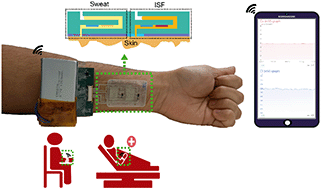
Lab Chip, 2022,22, 1793-1804
https://doi.org/10.1039/D2LC00183G
High performance inkjet printed embedded electrochemical sensors for monitoring hypoxia in a gut bilayer microfluidic chip
High performance embedded electrochemical sensors fabricated with an inkjet printing system in a gut bilayer microfluidic chip monitored developmental and induced hypoxia.
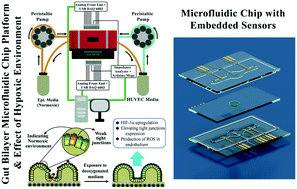
Lab Chip, 2022,22, 1764-1778
https://doi.org/10.1039/D1LC01079D
A visual portable microfluidic experimental device with multiple electric field regulation functions
A visual portable microfluidic experimental device (PMED) with multiple electric field regulation functions is designed to realize the integration and miniaturization of microfluidic systems.
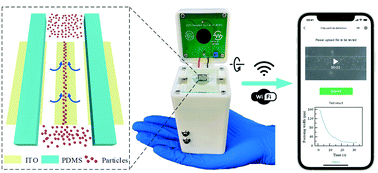
Lab Chip, 2022,22, 1556-1564
https://doi.org/10.1039/D2LC00152G
Configurable direction sensitivity of skin-mounted microfluidic strain sensor with auxetic metamaterial
A core–shell package design with auxetic metamaterial (AM) is proposed to configure the sensing performance of microfluidic strain sensor. By changing the structural design of AM, the sensor's directional sensitivity is effectively regulated.
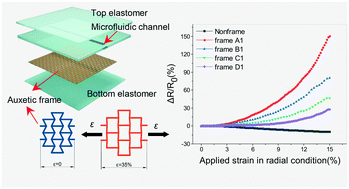
Lab Chip, 2022,22, 1630-1639
https://doi.org/10.1039/D2LC00141A
Autonomous electrochemical biosensing of glial fibrillary acidic protein for point-of-care detection of central nervous system injuries
Development of a novel fluid-handling assay with targeted sample delivery, independent redox preparation, and enhanced washing for fully automating single-step electrochemical immunosensing.

Lab Chip, 2022,22, 1542-1555
https://doi.org/10.1039/D2LC00025C
Tetra-primer ARMS-PCR combined with dual-color fluorescent lateral flow assay for the discrimination of SARS-CoV-2 and its mutations with a handheld wireless reader
Wild-type SARS-CoV-2 or its D614G and N501Y mutations can be selectively amplified by tetra-primer ARMS-PCR and detected by two test lines on a single dual-color fluorescent test strip with a handheld wireless device.
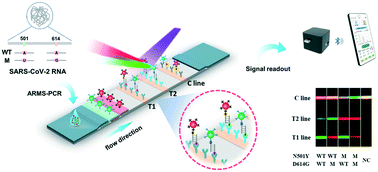
Lab Chip, 2022,22, 1531-1541
https://doi.org/10.1039/D1LC01167G
Microfluidic point-of-care device for detection of early strains and B.1.1.7 variant of SARS-CoV-2 virus
Additively manufactured plastic cartridges and low-cost optical reader system to successfully detect the SARS-CoV-2 virus from saliva samples within 30 min.
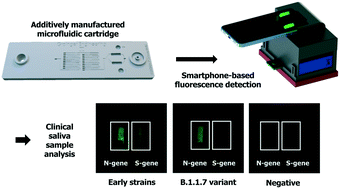
Lab Chip, 2022,22, 1297-1309
https://doi.org/10.1039/D2LC00021K
Development and translation of a paper-based top readout vertical flow assay for SARS-CoV-2 surveillance
An enhanced vertical flow assay that allows top readout has been developed and translated into a PoC application for detecting SARS-CoV-2 infection with saliva samples, providing a complementary antigen rapid test for COVID-19 surveillance.
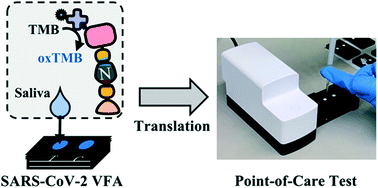
Lab Chip, 2022,22, 1321-1332
https://doi.org/10.1039/D2LC00073C
An immunosensor based on a high performance dual-gate oxide semiconductor thin-film transistor for rapid detection of SARS-CoV-2
We present an immunosensor based on a dual-gate oxide semiconductor thin-film transistor as a platform for detecting SARS-CoV-2.
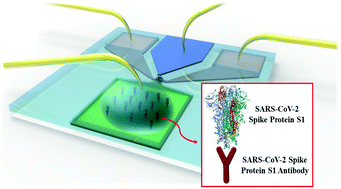
Lab Chip, 2022,22, 899-907
https://doi.org/10.1039/D1LC01116B
SE-ECL on CMOS: a miniaturized electrochemiluminescence biosensor
Electrochemiluminescence was integrated onto a CMOS sensor with demonstration for detection of uric acid. The device has improved photon collection efficiency compared to a microscope-based system with the same field of view.
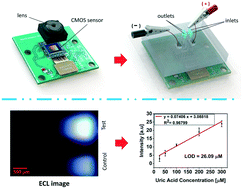
Lab Chip, 2022,22, 994-1005
https://doi.org/10.1039/D1LC00905B
On-board smartphone micromotor-based fluorescence assays
Herein, we describe the design of a portable device integrated with micromotors for real-time fluorescence sensing of (bio)markers.

Lab Chip, 2022,22, 928-935
https://doi.org/10.1039/D1LC01106E
Traffic light type paper-based analytical device for intuitive and semi-quantitative naked-eye signal readout
By simply applying a sample, the traffic light type μPAD enables highly intuitive equipment-free naked-eye readout with no need for calibration, subjective interpretation or calculation.
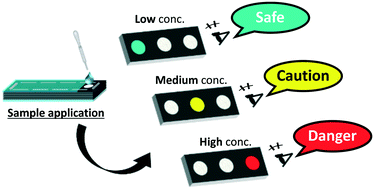
Lab Chip, 2022,22, 717-726
https://doi.org/10.1039/D1LC01060C